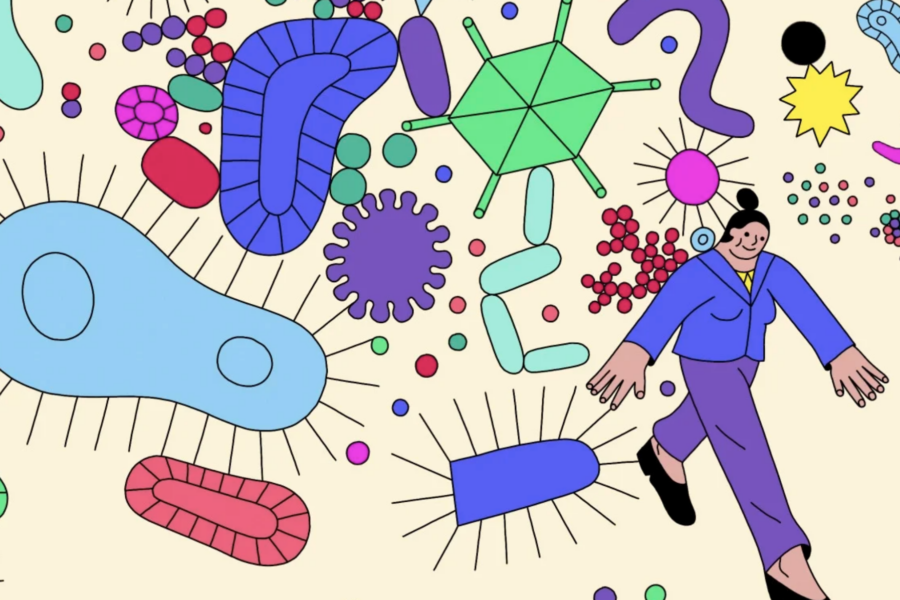Argh, you’re feeling sick again. You don’t want to take off work or go to the doctor if you don’t have to, but you also don’t want to be that person who infects the whole office (substitute “kid” and “classroom,” if applicable). You might have toughed it out before the pandemic, but the etiquette is different now. So how can you be sure about what you have, or if — and for how long — you need to stay home?
Here’s what infectious disease experts want you to know about some of the most common adult and pediatric viruses (and one bacterial infection): their symptoms, how they spread, how to treat them and when you (or your child) can reenter society.
— Cold
Mild symptoms, including runny nose and congestion. Most contagious on Days 2 and 3.
“Cold” is a catchall term for a mild respiratory infection. It’s most commonly caused by a rhinovirus, but adenoviruses, coronaviruses, parainfluenza viruses and metapneumovirus can also induce cold-like symptoms.
“We recognize it as being sort of the fallback diagnosis,” said Dr. Stuart Ray, a professor in the division of infectious diseases at Johns Hopkins Medicine.
In some people, a COVID-19, flu or RSV infection might result in mild symptoms and be mistaken for a cold.
Symptoms
Cold symptoms are familiar to most people: sore throat, runny nose, congestion and cough, sometimes combined with headache or fatigue.
Fever, muscle aches and lower respiratory symptoms — such as shortness of breath, wheezing or chest pain — are signs that you might have a more serious infection, like the flu or RSV.
“Neck and above is usually common cold, and down below is often something else,” Ray said.
Symptoms typically last about five to seven days, peaking in severity around Days 2 and 3 and tapering off after that.
How it’s spread
Rhinoviruses are spread primarily through droplets, meaning you breathe in what someone else coughs, sneezes or breathes out. They can also survive on surfaces for up to 24 hours, and you can become infected by touching your face after picking up virus particles from something like a door handle or TV remote control.
It typically takes a day or two after you’ve been exposed to a rhinovirus until you develop symptoms.
How it’s treated
There are no antiviral treatments for the common cold, but some over-the-counter medications and home remedies may help relieve symptoms. (Be sure to check medication labels: One common decongestant ingredient, phenylephrine, was recently deemed ineffective by an advisory committee to the Food and Drug Administration.)
How long you’re contagious
You are most infectious when you feel the worst, typically during the second and third days of symptoms. As you begin to feel better, the amount of virus in your body drops quickly, and it’s generally safe to assume that you’re no longer very contagious after Day 3 or 4, said Dr. Patricia Whitley-Williams, a professor of pediatrics at the Rutgers Robert Wood Johnson Medical School.
Don’t worry if you still have a cough at that point; Ray said that this is because the airways can remain inflamed from the body’s immune response, not because the virus is still present. However, you should continue to practice good hygiene, like coughing into your elbow and frequently washing your hands. If you have a lot of mucus or other symptoms, you should behave as if you’re still contagious.
There’s debate over whether you need to stay home when you have a cold. Though colds typically aren’t risky, they are unpleasant and inconvenient, which can be reason enough to avoid spreading them to others. More important, if your cold is actually COVID or RSV, it could be dangerous for someone else.
